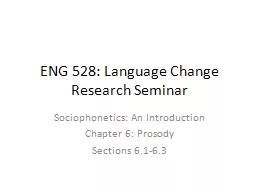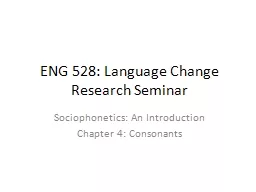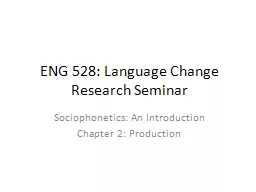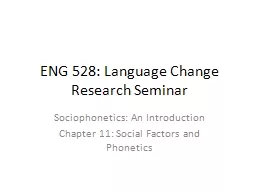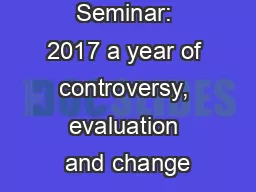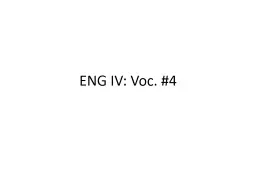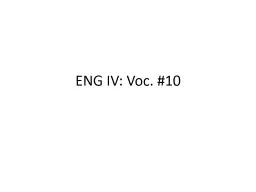PPT-ENG 528: Language Change Research Seminar
Author : ellena-manuel | Published Date : 2016-03-08
Sociophonetics An Introduction Chapter 6 Prosody Sections 6163 Whats Prosody Anything nonsegmental in phonology or phonetics including pauses rate of speech lexical
Presentation Embed Code
Download Presentation
Download Presentation The PPT/PDF document "ENG 528: Language Change Research Semina..." is the property of its rightful owner. Permission is granted to download and print the materials on this website for personal, non-commercial use only, and to display it on your personal computer provided you do not modify the materials and that you retain all copyright notices contained in the materials. By downloading content from our website, you accept the terms of this agreement.
ENG 528: Language Change Research Seminar: Transcript
Download Rules Of Document
"ENG 528: Language Change Research Seminar"The content belongs to its owner. You may download and print it for personal use, without modification, and keep all copyright notices. By downloading, you agree to these terms.
Related Documents

